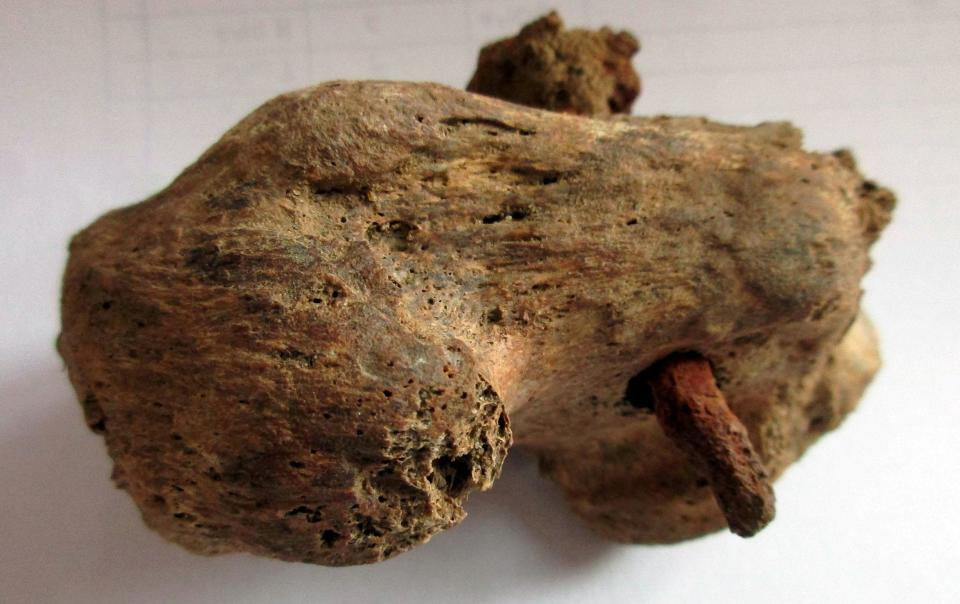First physical evidence of Roman crucifixion in Britain unearthed in housing estate

Archaeologists have found the "best physical evidence for a crucifixion in the Roman world" at a Cambridgeshire housing estate.
The remains of a man, who had a 5cm iron nail embedded in his right heel bone, were discovered in an ancient grave in the village of Fenstanton alongside a wooden board he is thought to have been pinned to.
He is believed to be aged between 25 and 35, and his emaciated skeleton suggests he was most likely a Roman slave who was routinely punished by his master.
The 5'7" tall body was uncovered by a team of professional excavators in 2017, who were analysing the site ahead of a housing development being built. The man died between AD 130 and AD 337, according to radiocarbon dating.
It is the first example of a Roman crucifixion in the UK, and one of only a handful of similar cases worldwide.
David Ingham, who led the excavation, told The Telegraph: "It's the best example of a crucified individual from the Roman world. We'd like to stage a reconstruction at some point to see what he looked like. We'd use the skull and recreate the whole body."

Corinne Duhig, an archaeologist at the University of Cambridge who examined the remains, concluded that crucifixion was the only likely explanation for the injuries.
It is thought that the man's limbs had been tethered during his life, as his lower legs showed signs of thinning due to shackles.
He was likely crucified on a roadside half a mile away from the small cemetery in Fenstanton where he was buried.

Crucifixion was the main form of capital punishment in Roman times. Constantine the Great banned the practice during his reign in AD 306-337.
Romans reserved crucifixion for condemned slaves, rebels and lower classes. It was designed to prolong an agonising death, and to serve as a warning to others.
Suffocation was the usual cause of death, as the unnatural position of the arms being pinned above the head meant the condemned person couldn't take enough air into the lungs.
Despite the link between crucifixion and Christianity, experts believe there was no religious element in this case.
It is highly unusual for a victim of crucifixion to be buried, as they are usually left in the open area or thrown into a pit.
It is also very rare to recover the nails used to pin the person to the wooden frame, as they were often recovered following death due to their value in Roman times as a metal. Most crucifixions were also carried out using rope.
Biblical texts refer to crucifixion taking place with wooden crosses, but using a wooden board instead is thought to be a local variation in this case.

No other nails were found in the man's body, suggesting that he was tied to the wooden frame with rope and the heel bone nail was to prevent him from moving.
There was a 1cm-deep hole near where the nail was embedded in his heel, suggesting more than one attempt to pin his body to the wood.
Archaeologists believe he would have hung for more than a day slowly dying.
The first skeletal evidence for crucifixion was found in 1968 during an excavation of a cemetery in Giv'at ha-Mivtar in Jerusalem. A heel bone with an embedded nail was discovered.
However, the remains were less well preserved than the Fenstanton man, and had been moved from one burial site to another.
Other skeletons with holes in their heels were discovered in Mendes in Egypt in the 1990s, and in Gavello, Italy, in 2006 - but it is not certain that the holes were caused by crucifixion.
Fenstanton man was found in a cemetery with six other graves. His remains are one of 48 sets which were found by archaeologists in five Fenstanton cemeteries during digs between 2017 and 2018.

 Yahoo News
Yahoo News 